Something is smelling decidedly ‘off’ in today’s world, with nauseating levels of corruption, mass murder, lies, hypocrisy and repression. This essay, which was first posted in three parts on Winter Oak and my Substack blog, is based on three books I happen to have recently read, each of which provides fascinating but necessarily limited insights into the reality of contemporary society. Placed alongside each other, however, they can help us to identify the source of the odour.
Sayanim
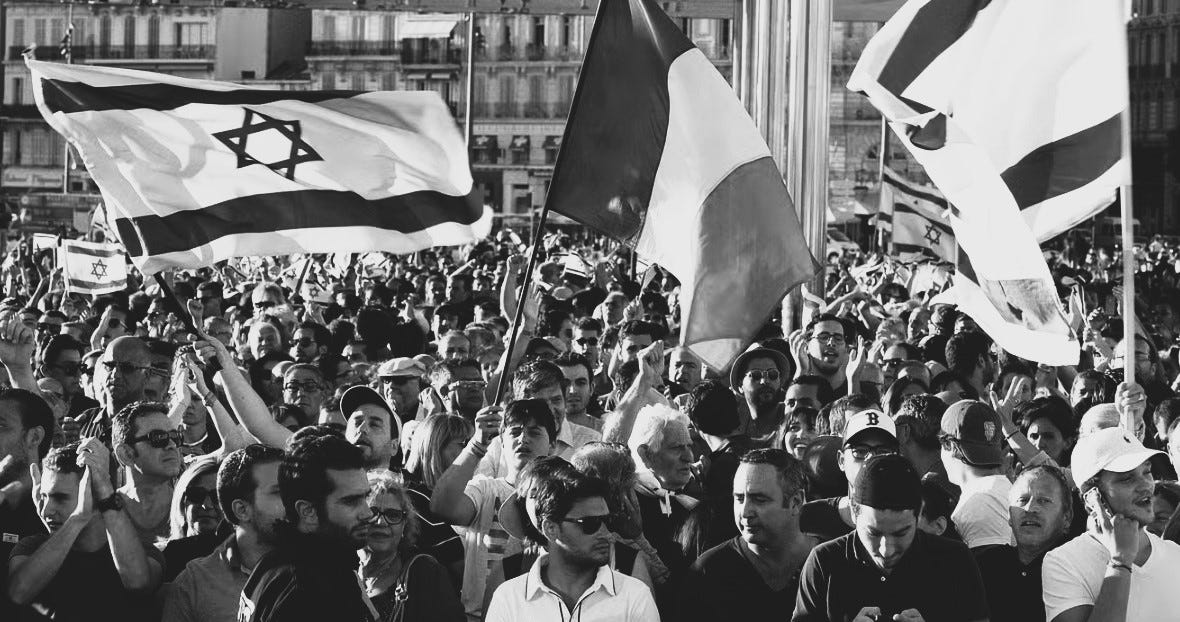
“The French government has been totally captured by Israel. The president behaves like a Zionist agent. The mass media are controlled… I am astonished by the power of the Jewish lobby. It practically dictates the Middle East policies of France and of Europe”. [1]
“Here are people who control most of the mainstream media, who have at their disposal intermediaries in the highest spheres of the state, not to speak of considerable financial clout, and they cannot tolerate the existence of a little rebel group… These people have decided to attack all forms of pro-Palestinian expression. They are everywhere, they are powerful and above all are diabolically efficient. They must certainly be working with intelligence services”. [2]
The two statements above are fictional. Or rather, they are fictional in that they have been put into the mouths of fictional characters in a work presented as a fiction.
However, author Jacob Cohen clearly does not want his readers to imagine that the contents of Le Printemps des Sayanim (‘The Sayanim Spring’) bear no relation at all to real life.
He chooses to describe his book as an “account” (récit) rather than a novel and his double-edged disclaimer declares: “Despite the troubling proximity to reality of the related facts, all resemblance to existing persons would only be the product of a coincidence”. [3]
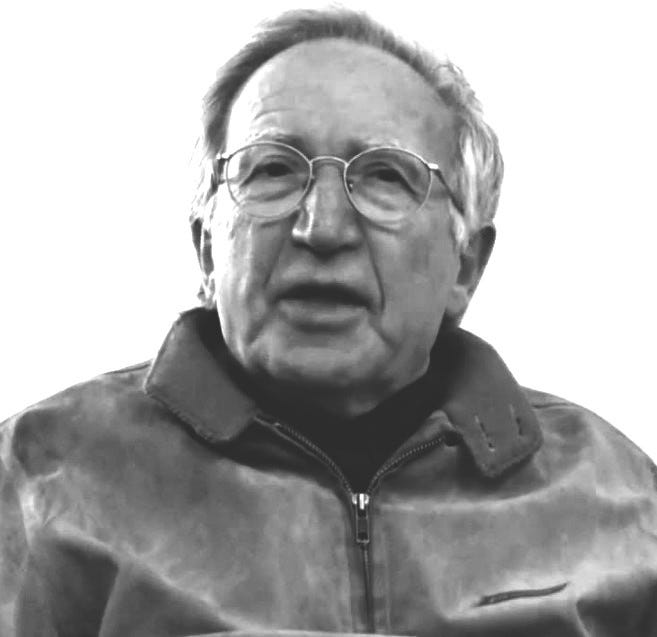
One such coincidence concerns the central fictional character Youssef El Kouhen, the history teacher of Moroccan background who becomes involved in Freemasonry in France and whose support for Palestine provokes reprisals from the Zionist sayanim who play a leading role in the organisation.
No connection here, obviously, to Moroccan-born Jacob Cohen (pictured), with a degree from Science-Po in Paris, author of a book exposing the activities of those same networks.
Cohen’s “fiction” begins with a page of non-fictional quotes describing the existence and activities of the sayanim, a volunteer force of millions of Jewish Zionists across the world who are deployed by Mossad to defend and advance Israel’s interests.
Here former Mossad agent Victor Ostrovsky states that this is the Israel intelligence service’s key asset – whereas a branch of Russian intelligence in any given country might need a staff of at least 100 people, Mossad can function with six or seven, the rest of their personnel being from civilian sayanim. [4]
Cohen has his fictional alter ego muse over the psychology of these fanatic Zionists, for whom Israel is the most wonderful country in the world.
“El Kouhen wondered what kept them in their legal homeland [France]. Having the keys to paradise, and staying outside, was not the least of the paradoxes of the ‘chosen people’”. [5]
He describes how on the one hand the sayanim feel an exaggerated pride and confidence in their role, with one of them seeing himself as belonging to “an army of the shadows, with tentacle-like branches capable of reaching any target anywhere in the world. With formidable efficiency”. [6]
But on the other hand there is a constant sense of being in existential danger which maintains a certain desperate urgency in the sayanim mind.
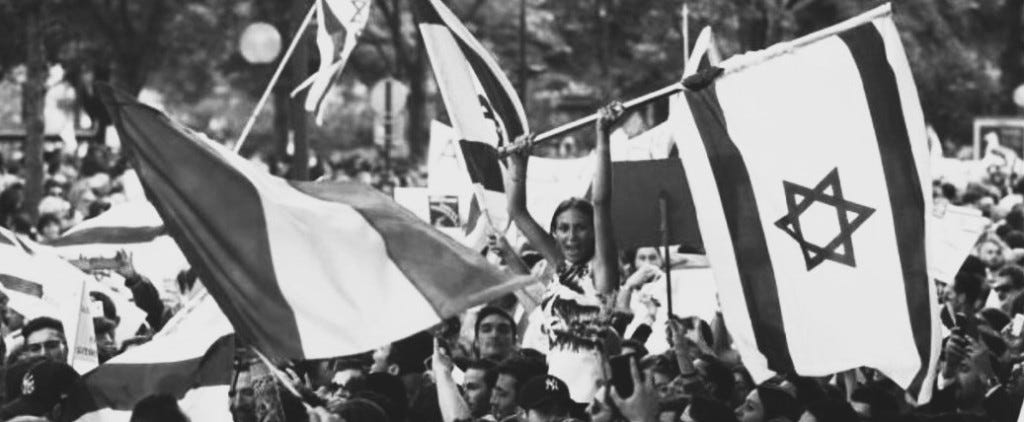
He has one character declare: “You know, Israel gives this impression of being an indestructible force. Which is good, because we are strong. But the threat is permanent. Our enemies are increasingly determined. They will seize any opportunity to hurt us, to finish us off. The war will not only be won on the military front. Our only chance of survival resides in our unity, the unity of the entire Jewish people. Without that, it’s the beginning of the end… We are at war. It’s us or them”. [7]
El Kouhen/Cohen expresses a certain scepticism regarding his co-religionists’ depiction of themselves as perpetual victims.
“They had suffered a lot. But all the same! The scales were truly tilted in their favour. Jews now occupied a prime place. Sympathies at the highest level of the state. The top dogs of France standing to attention at the annual dinner held by CRIF [Conseil Représentatif des Institutions Juives de France]. To the point of developing a feeling of impunity, tinged with arrogance…” [8]
Zionist meetings, in the book, receive VIP treatment from certain politicians in Paris, with the town hall of the 16th arrondissement providing, for free, not only a meeting room but also a lavish buffet.
“An unconditional supporter of Israel, and of the Jewish organisations which represented it, the mayor pulled out all the stops”. [9]

And Paris St-Germain’s Parc des Princes football stadium, in the same arrondissement, is made available by the fictional owner for a Zionist-organised event.
He declares at a B’nai B’rith meeting: “The sandwiches and the drinks will be on the club. We will also be laying on the TV coverage. The full works. Long live the friendship between France and Israel!” [10]
The same event also attracts a grant of 60,000 euros from the EU and financial backing from TV channel ARTE. [11]
The principal weapon deployed by the agents of Zionism operating both in French Freemasonry (Grand Orient) and in the pseudo-masonic Jewish B’nai B’rith is to “reduce critics of Israel to silence by likening them to the worst anti-semites”. [12]
“A terrible sword of Damocles was hanging over the head of those who still believed in the equality of states under international law.
“The supreme accusation, the ultimate insult. In the end, through media hype, they got it accepted as self-evident. All ‘exaggerated’ criticism of Israel amounted to anti-semitism”. [13]
One of the volunteer sayanim, a doctor, is sent to an international medical conference at which a prominent Scottish cardiologist is known to be planning a resolution in support of Palestinians, condemning Israeli war crimes.
The Zionist agent gives a speech evoking the holocaust, the rise of anti-semitism and the existential threat to Israel which leads to the resolution being narrowly defeated. [14]
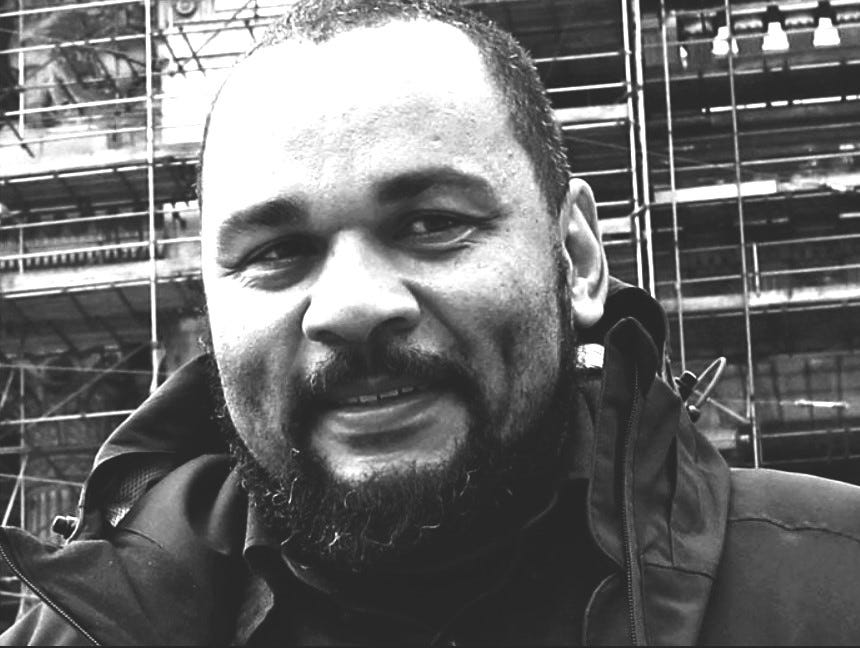
Cohen’s 2010 fictional account also refers to a very real episode in recent French political life, namely the sayanim campaign against Dieudonné M’Bala M’Bala (pictured), a well-known comedian who started to poke fun at Israel and Zionists.
He writes that the Zionists, very present in show business, set out to discredit Dieudonné by all possible means.
“Accused of ‘anti-semitism’, he was blacklisted and boycotted by the media. Schemes were devised to get his touring shows cancelled. A pre-planned professional death. The message to other artists could not have been clearer. Forbidden zone”. [15]
Cohen evidently had some fun inventing names for his fictional characters – I know enough German to have laughed out loud at “Claude Arschlokhovitch”, for instance. [16]
A key fictional character in the book is a well-known public figure called MST, which in French stands for “maladie sexuellement transmissible” (sexually transmitted disease, STD).
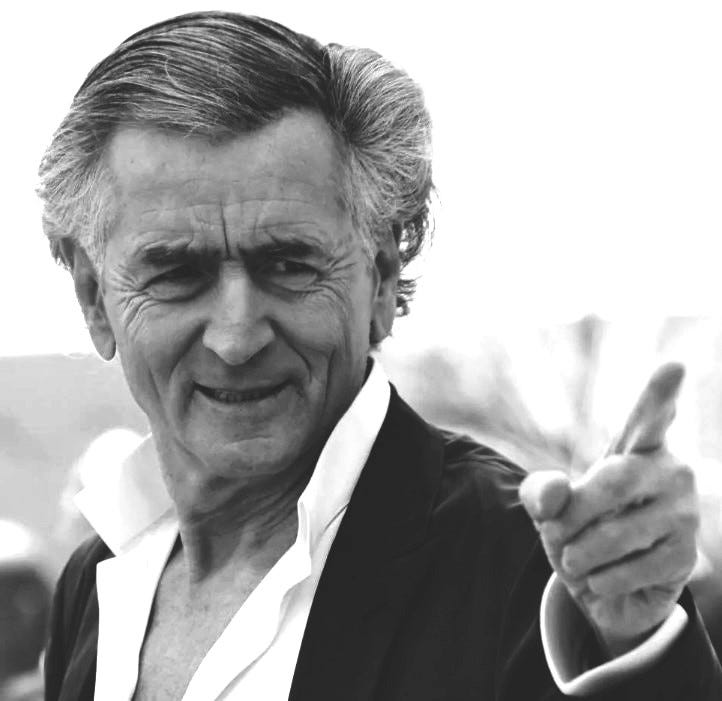
I can only think of one real-life public figure in France who is known by three initials and that is Bernard-Henri Levi, aka BHL, (pictured) but any superficial resemblance is no doubt another of Cohen’s mere coincidences.
MST is depicted as being the most important Zionist agent in France, “worth more than a hundred sayanim“. [17]
An Israeli diplomat enthuses: “This man has incredible networks in the most influential circles in Europe and America. He can call Sarkozy [French President, 2007-2012] whenever he wants – or the king of Morocco, or the president of the European Commission”. [18]
“MST has a special relationship with the Mossad. It’s the Mossad who took care of his protection in Pakistan, when he carried out his inquiry into the murder of the American journalist. Otherwise he wouldn’t have gone. It’s too dangerous. No other secret service would have been capable of protecting him”. [19]
This telegenic Zionist agent, known for his “open-neck white shirts, dandy ways and abtruse intellectualism”, [20] leaps into action every time Israeli interests need defending.
“A sociologist previously above suspicion had dared to draw a parallel between the Israeli occupation and other historical occupations. MST immediately launched a petition which gathered the usual support.
“The major newspapers opened their columns to him. He was invited on to TV chat shows. Canal+ invited him on five times. You could almost imagine him as an intrepid and irreproachable knight, in immaculate white livery, pursuing evil-doing enemies”. [21]
MST argues that to compare the Israeli occupation with other occupations was “to delegitimise the existence of Israel and thus pave the way to a new Holocaust. It was the expression of a historical and visceral anti-semitism, which didn’t dare speak its name, the same anti-semitism which had wrought devastation in Europe.
“These new anti-semites didn’t know, or pretended not to know, that the Jewish army was the most moral in the world”. [22]

The secret of MST’s success in sounding convincing is that he is known for his public criticism of Israel.
Revelation of his true role is a mind-blowing experience for Gilles, a relatively recent Zionist agent, who had previously assumed that MST was not totally on their side.
“What a strange world! He had already benefited from some confidential information – those tasty but unimportant little secrets which announce your arrival in the circle of the initiated.
“But the revelation about MST was of another nature. For the first time, he grasped the complexity of the hidden connections and of the illusions within which ordinary mortals live”. [23]
One of MST’s key catchphrases is his call for “peace” in the Middle East and this term is used a lot by the sayanim in the book.
To this PR end, they arrange an Israel-Palestine football match in Paris – the event I mentioned earlier.
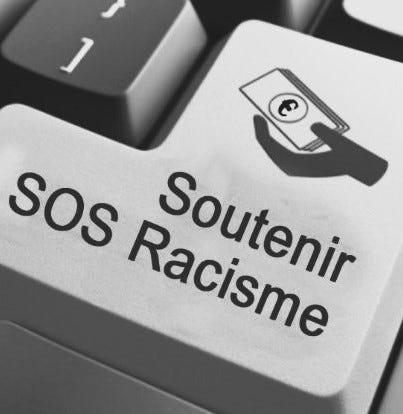
One of them explains: “We have to give the impression that things are moving and that peace can be achieved. And that, because we are on the right road, all forms of resistance can only delay the process”. [24]
To help promote this narrative, the sayanim are closely involved with SOS Racisme (a real-life organisation) whose black or Arab “leaders” are little more than a front for “the Jewish Community”. [25]
Cohen’s Muslim characters condemn SOS Racisme as “sell-outs”, “darlings of the system”, involving “the right of the Socialist Party, Jewish and Zionist organisations and even pro-Americans”. [26]
You could hardly think otherwise “when you know who it was that created them!” [27]
This “anti-racist” body is thus just a Zionist means of capturing the moral high ground, of deflecting criticism of Israeli imperialism [28] with empty talk of “peace” and warnings of a rise in anti-semitism.
It is part of what Cohen describes as “the hidden side of things, the possibilities for manipulation, the telephone calls to the media and the arranged interviews, the invisible web of imposed truths”. [29]
Propaganda
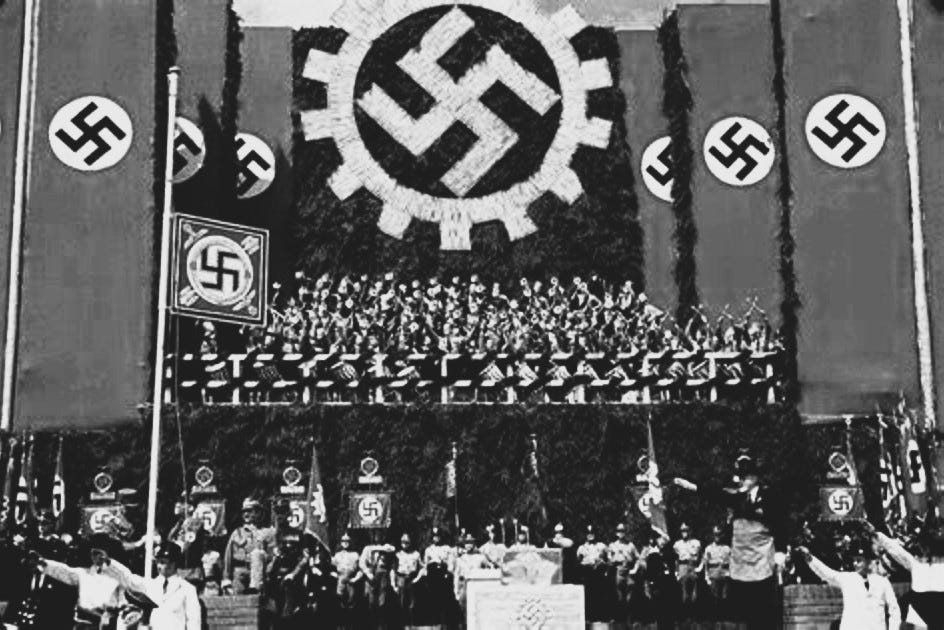
Eric Hazan, the French writer and publisher who died this summer at the age of 88, goes out of his way in his 2006 book LQR: La propagande du quotidien (‘LQR: Everyday Propaganda’) to insist that he is “obviously not equating neoliberalism with Nazism”. [1]
This is a rather puzzling thing for him to have written, since not only is neoliberalism very similar to Nazism and Fascism, as I have often pointed out, but this fact is also strongly confirmed by his book!
Moreover, the equation that he denies making even lies behind the book’s title, as he explains in the opening pages.
A German-Jewish academic Victor Klemperer kept note of the newspeak rolled out by the Hitler regime and in 1947 published his observations, using the term LTI, Lingua Tertii Imperii, Language of the Third Reich, to describe the phenomenon. [2]
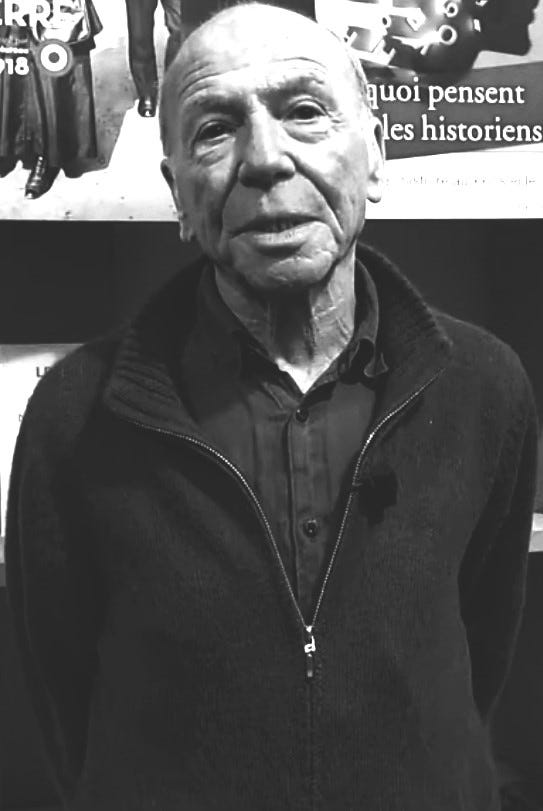
Hazan (pictured) thus uses LQR, Lingua Quintae Republicae, Language of the Fifth Republic, to refer to the newspeak of contemporary (neoliberal) France.
The notable continuity between Nazi Germany and today’s “democratic” world is something I have mentioned on a number of occasions.
In 2021, in Fascism Rebranded, I discussed Johann Chapoutot’s 2020 revelations about a corporate Management Academy in Germany that was run from 1956 by a certain Reinhard Höhn, who had been a prominent protégé of Heinrich Himmler and a shining light of the SS. [3]
The post-war continuity was not just in the personnel – Höhn was not the only Nazi involved – but also in the authoritarian industrial mindset behind both National Socialism and business management.
As Chapoutot writes: “It transforms each person into a thing (res), an object, which must be useful in order to have the right to live and exist. The Germanic individual becomes a tool, a raw material (Menschenmaterial) and a factor – a factor of production, of growth, of prosperity”. [4]
Then in 2023 I pointed out how Emmanuel Macron’s government in France was intent on replacing “Liberty, Equality and Fraternity” with the new slogan of “Work, Order and Progress”.
I remarked: “Try that out in German and see how it feels: ‘Arbeit, Ordnung, Fortschritt’. Hmmm…” [5]

The similarities in outlook and language keep cropping up. Earlier this year, a pro-government journalist said on French TV that “conspiracy theorists” were like “cockroaches” that had to be “got rid of”. [6]
For some years now, the French state has been using the strange term “dérives sectaires” – “sectarian excesses” – to describe thinking it doesn’t like, such as that of those very same “conspiracy theorists”. [7]
Where did they get this term from? It is a striking coincidence that the Nazi party in Germany also described dissident opinion as “sectarian” and staged training programmes for state employees so as to steer them away from ideas deemed unacceptable, including those of the anti-industrialist Ludwig Klages. [8]
In Klemperer’s book, he says that the Third Reich forged only a very few new words, but rather “changed the value of words and their frequency… subjected language to its terrible system, used it as its most powerful, public and secret means of propaganda”. [9]
Hazan writes that the contemporary French equivalent of this Nazi language relies on people not noticing that it is being deployed: “Above all else, it must not be seen for what it is”. [10]
He says it “is managing to spread without anyone, or hardly anyone, apparently noticing its advance”, hence his attempt “to identify and decipher this new version of the banality of evil”. [11]
Some of the examples he gives are specific to France, but others will be familiar to those living in the English-speaking world.
“Governance” is used instead of “government”; [12] “equity” instead of “equality”; [13] “reform” describes any acceleration of neoliberal “modernisation”, [14] while attacking an enemy for no good reason is a “pre-emptive” strike [15] aimed at ensuring “security”. [16]

There is, of course, “zero tolerance” for any challenge to “l’ordre républicain” [17] – known elsewhere as “law and order” or “the rule of law” – and, as we have noted, such a necessary companion to “work” and “progress”.
And no greater fear stalks the nightmares of a LQR-speaker than “the end of authority”. [18]
The parallels which Hazan finds are not just with Nazism but also with Soviet Communism, a slightly different model of 20th century industrial-authoritarianism.
He quotes one Vadim Zagladine as writing in 1989: “According to current Soviet thinking, security can only be assured through the joint efforts of all members of the global community”. [19]
That’s a turn of phrase that could have come straight out of Davos!
And Hazan notes the curiously close relationship between “neoliberal theories of ‘human capital’” [20] and the pronouncements of Stalin, who declared in 1931: “We must finally understand that of all the precious capital in the world, the most precious capital, the most decisive capital, is human beings”. [21]
For reasons which will quickly become clear, the language of the Fifth Republic seems to stigmatise one ethnic group in particular, using terms such as “arabo-musulman” [22] and “islamiste” – the latter, unlike “islamique“, having “the advantage of rhyming with terroriste“, as Hazan observes. [23]
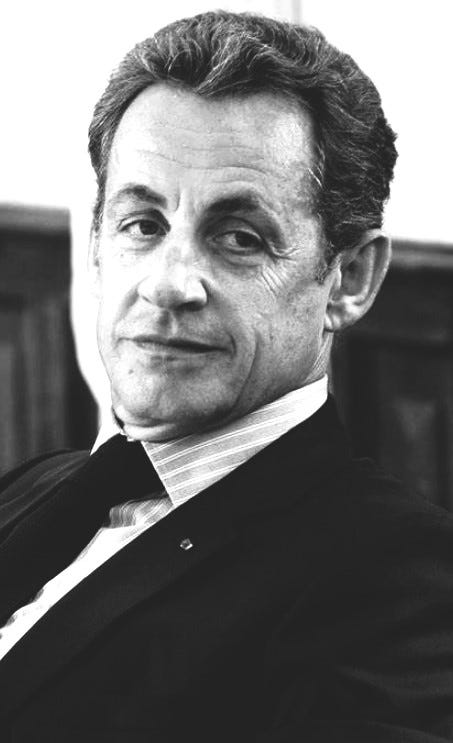
These people represent a threat that has to be “eradicated” (according to academic Gilles Kepel) and the places where they live “jet cleaned”, as former president Nicolas Sarkozy (pictured) put it. [24]
Hazan records that one of the after-effects of 9/11 was a change in the language used in France.
“Hatred of Islam was now being expressed in social circles, reviews and institutions that one would have imagined impervious to racism, or at least to its open expression”. [25]
As this taboo was lifted, others were imposed. Hazan cites one French journalist’s 2004 warning that criticism of neoliberal George W. Bush indicated a “resurgence of Americanophobia”, [26] while “expert” Alexandre Adler insisted that same year that “anti-Americanism is a fascistic emotion which in fact has an affinity with the ‘Muslim fascism’ propagated by the islamists”. [27]
Needless to say (particularly for anyone who has read the first essay in this short series), the greatest outpourings of outrage are reserved for instances of alleged “anti-semitism”, which somehow seems to be perpetually on the rise.
Hazan records the melodramatic reaction of the political class to a 2004 fire at a Jewish social centre in Paris, which later turned out to have set by a Jewish man with mental health problems. [28]
Jacques Chirac, president at the time, expressed his “profound indignation”, “strongly” condemned “this unspeakable act” and insisted on the “absolute determination” of the authorities to track down the culprits. Presidential determination is usually either “absolute” or “unwavering”, remarks Hazan. [29]
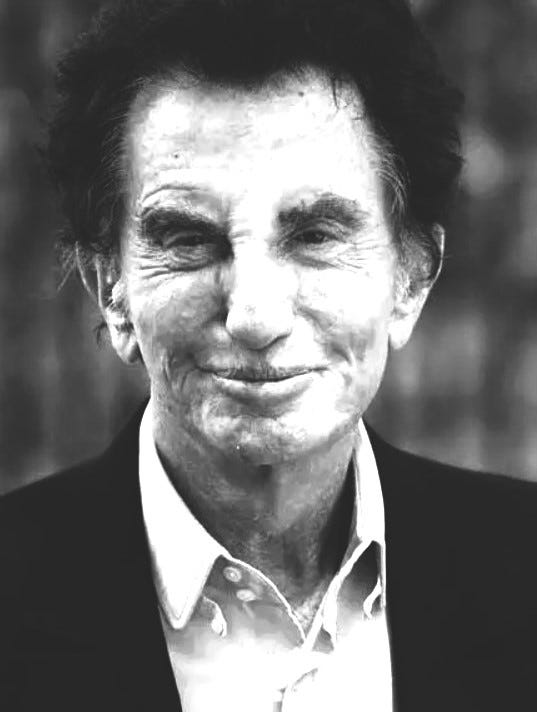
Bertrand Delanoë, Mayor of Paris, warned of a “nasty dangerous atmosphere”, while politician Jack Lang (pictured) called for “action” instead of “fine words and crocodile tears”, although, as Hazan points out, he did not indicate what kind of action he had in mind. [30].
Hazan, who was himself Jewish, also points to a book, nearly 1,000 pages long, on the subject of “planetary Judeophobia”, written by Pierre-André Taguieff in a totalitarian style he regards as typical of LQT.
“He is not content with just insulting his enemies; they are exposed to public condemnation in a work whose 15-page index reads like a proscription list”. [31]
Hazan also does not shy away from making a key connection, related to the meaning of “terrorism”.
He notes that French TV news described a 2004 Palestinian resistance attack on an Israeli fort in Rafah, in the south of Gaza, as a “terrorist attack”. [32]
This, he says, mirrored the application of the same term to the wartime French Resistance by Philippe Henriot, Secretary of State for Information in Petain’s Nazi-collaborating Vichy regime. [33]
Henriot was assassinated in April 1944 and the day after his funeral a statement was printed in Combats, the journal of the pro-Nazi paramilitary police force, the Milice.
It said: “Philippe Henriot, we renew our promise to you to fight to win, to rid France of these gangs of looters which are terrorising our provinces”. [34]
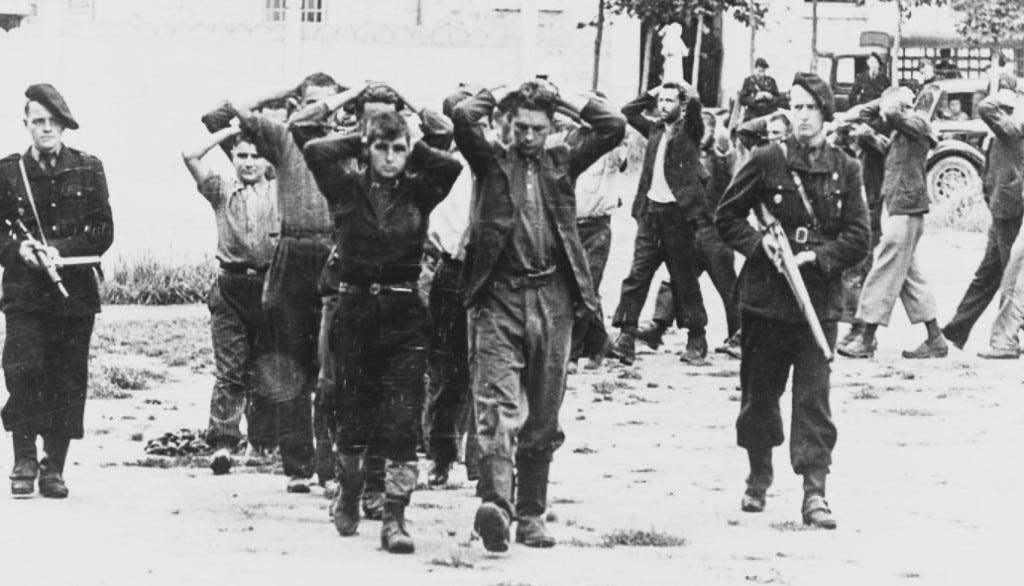
An obfuscation, nay inversion, of the relative moral standing between the system and its opponents is central to the language of contemporary power.
In a society run by “the politico-financial oligarchy”, [35] says Hazan, the official vocabulary thus never speaks of profit, but of a “return on investments” [36] and, as he explains, there can be no room for old-fashioned notions such as exploitation or oppression.
“These words would effectively imply that there is such a thing as exploiters and oppressors, which is a bad fit with the announced end of class relationships.
“However, a way had to be found of designating those who live in misery, now too numerous to be simply rendered invisible.
“The experts have found the name: they are the excluded. The replacement of the exploited by the excluded is an excellent move for the proponents of consensual pacification, since there are no identifiable excluders to be the modern equivalents of the exploiters of the proletariat”. [37]
Contemporary non-exploiters in the business and financial world are presented to the public as “sensitive souls” [38] with “noble sentiments”. [39]
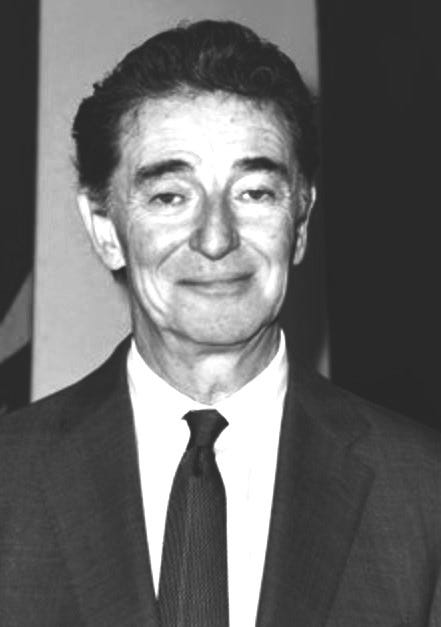
Hazan illustrates this with regard to the way the media presented the 2004 arrival of financier Edouard de Rothschild (pictured) as leading shareholder of Libération, a supposedly “left-wing” daily newspaper founded by Jean-Paul Sartre in 1971.
One newspaper editorial gushed: “His investment in Libération will be his first step as a patrician concerned about public debate and for the irreplaceable role of the daily press”. [40]
Rothschild himself has declared: “At certain moments one has to know how to charm; and at others to impose oneself”. [41]
Hazan remarks that this kind of language “presents ‘the ruling elite’ as a sort of collective good papa, severe but benevolent. Firmly determined to uphold the rule of justice for the happiness of the population”. [42]
Sometimes the most important insights into any subject matter turn up at the intersection of two different sources.
This is the case with the word “ensemble” – together – which Hazan presents as part of his Language of the Fifth Republic, deployed everywhere in an apparent bid to give the impression of national unity and thus to maintain order.
In official messaging and advertising alike, people are urged to keep the pavements clean ensemble, to take care ensemble on the Paris Metro, to respect the environment ensemble. [43]
There are also warnings that “extremists” – including those ever-lurking “anti-semites” – are threatening democracy and people’s capacity to live ensemble. [44]
In Jacob Cohen’s “fictional” account of Zionist influence on French society, which I wrote about in the first of these essays, he describes an advertising campaign featuring the slogan “Ensemble, éclairons le monde” – ‘Together, let’s light up the world’ – with a photo of a Menorah (seven-branched candelabrum) and the name of the Jewish religious festival Hanukkah.
The purpose of this is explained thus: “Hanukkah must become a familiar notion. A universal message of peace, symbolising freedom and linked to the history of the Jewish people. The identification with Israel will happen naturally”. [45]

A decade after both Cohen and Hazan wrote about the political deployment of the word ensemble, it became, in 2021, the name of the coalition of parties supporting President Macron, [46] a former Rothschild banker [47] who is said to still be very close to the famous Jewish family.
Hazan says that LQR first appeared “during the course of the 1960s, during gaullo-pompidouism [the governments of General de Gaulle and Georges Pompidou], that brutal modernisation of traditional French capitalism”. [48]
As I explained in Enemies of the People, Pompidou was the director general of the Banque Rothschild, who initially ran de Gaulle’s staff office for six months. [49]
There he revised the constitution so that the Fifth Republic of 1958 (that lent LQR its name) would allow more presidential power over elected representatives – a power which has also been very useful for Macron in recent years.
Pompidou returned to the Rothschild bank, before going back into politics as de Gaulle’s second Prime Minister between 1962 and 1968, then becoming president from 1969 until his death in 1974.
During that period there was much social unrest in France, including the famous uprising of 1968.
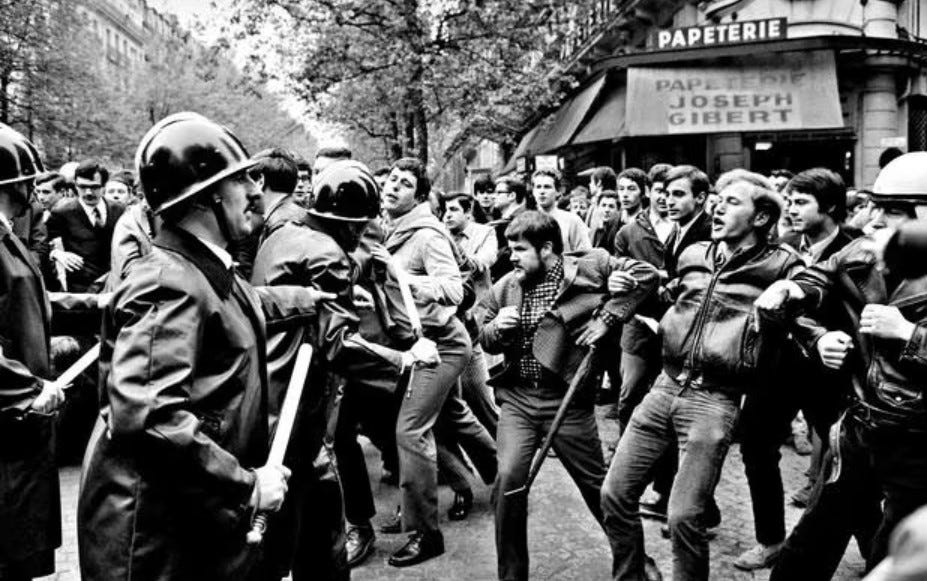
One group, La Gauche Prolétarienne (The Proletarian Left), formed in 1970, was particularly known for its direct action attacks (“terrorism” for some) on the ruling class and the ultra-rich.
Its theoretical journal, J’Accuse, included among its contributors and editors André Glucksmann, Michel Foucault, Jean-Luc Godard, Gilles Deleuze, Simone de Beauvoir and Jean-Paul Sartre.
Explains journalist and author Francis Wheen: “They also published a newspaper, La Cause du Peuple, and when its editor was arrested Sartre himself took over – though his efforts went largely unnoticed, since the police confiscated every issue.
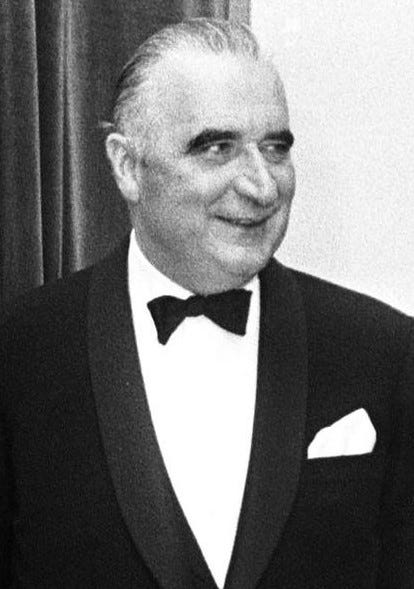
“Only two years after les évenements of May 1968, the Pompidou government was taking no risks: it also banned the Cuban journal Tricontinental, the left-wing review Le Point and Carlos Marighella’s Minimanual of the Urban Guerrilla“. [50]
Is it mere coincidence that the fascistic Pompidou (pictured) was, like Macron, a career Rothschild banker?
Is it coincidental that, as I related in Enemies of the People, the Rothschilds funded, via their Wall Street fronts, Soviet Communism, Italian Fascism and German Nazism, with the aim of advancing their industrial-authoritarian agenda?
Hazan’s book, especially when taken together with Cohen’s, paints a disturbing portrait of the hidden reality of contemporary French society.
And, of course, that reality is mirrored in other countries, as will be confirmed in the third and last of these insights.
Conspiracy
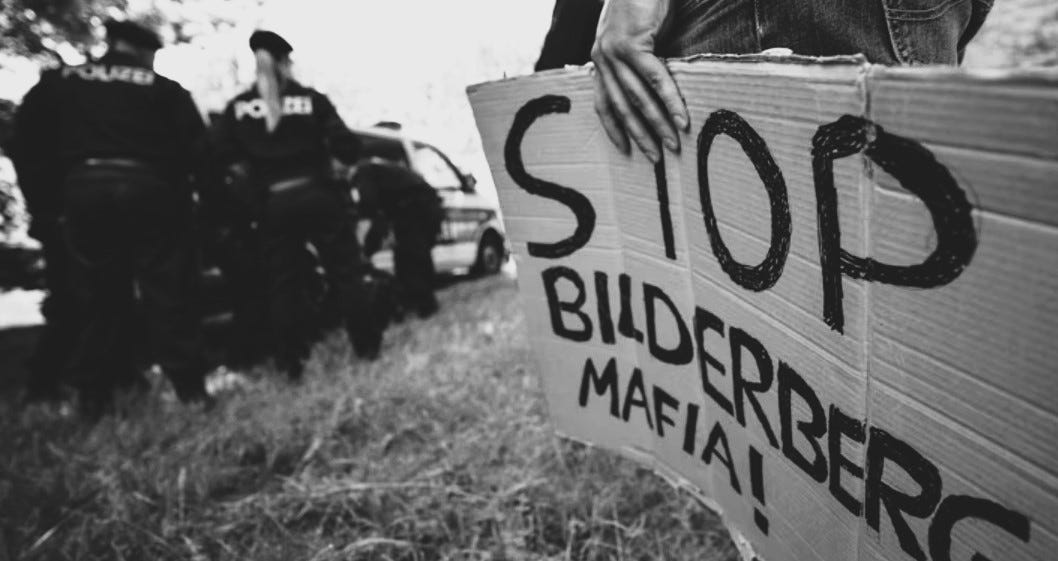
The ruling group in our society uses its propaganda to inverse the truth of the moral relationship between itself and its opponents or victims, as we saw in the previous essay in this series.
And its manipulation is particularly convoluted with regard to the notion of conspiracy.
While the dominant group is constantly conspiring against the public in its own selfish interests, it likes nothing better than to accuse its enemies either of spreading false “conspiracy theories” about its own nefarious activities or of themselves being involved in criminal “conspiracies”.
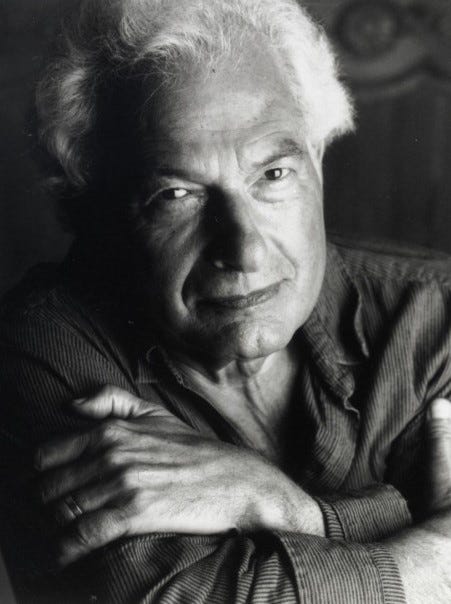
Joseph Heller (pictured), author of the iconic American satirical novel Catch-22, said in 1973: “What illegal conspiracies have been formed more likely exist between prosecutor, judge and policeman, who draw their paychecks from the same bank account and depend for promotion on the same political superiors.
“Throughout the novel there are inquisitions, trials, sneaky undercover investigations, bullying interrogations, and numerous more cruel, unpunished acts of intimidation and persecution by people in positions of power, no matter how small, against others who are decent, innocent and harmless, or whose offences, if committed at all, are trivial.
“Much of our national experience in recent years has been characterised by the same”. [1]
There was a time, believe it or not, when exposing the conspiracies of the powerful was regarded as important by those who considered themselves to be “left-wing”, as Francis Wheen reminds us in his entertaining 2010 book about the 1970s, Strange Days Indeed: The Golden Age of Paranoia.
“The fly-poster for a radical student seminar in 1975 lists some of the recurring themes: ‘From Dallas to Watergate: Official Violence and Cover-Up – a Campaign for Democratic Freedoms Conference. Films. Panels. Workshops on Assassinations. Intelligence. Community/Labor Repression”. [2]
Thanks to the system’s efforts to smear any such analysis as “conspiracy theory”, fuelled by “paranoia” and “right-wing extremism”, it started to disappear from “respectable” view.
The hidden machinations of power were now only of interest to “alienated activists on both the Left and the Right, united in a pathological mistrust of Them”, [3] as Wheen rather snarkily puts it.
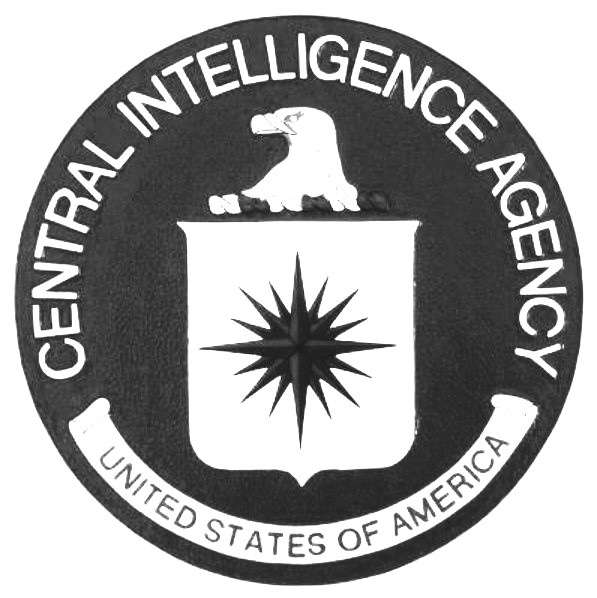
But, to the disappointment of those in power, the questioning outlook never completely went away.
After the Oklahoma bombing of 1995, a New Yorker article complained about “views that have long been shared by both the far right and the far left, and that in recent years have come together, in a weird meeting of the minds, to become one, and to permeate the mainstream of American politics and popular culture. You could call it fusion paranoia”. [4]
Of course, what was really happening was that people from different political backgrounds were becoming aware of the same reality regarding the identity, nature and activities of the ruling group.
But that was something that would never be admitted by the system’s faithful journalists, hundreds of whom, in the USA, were connected to the CIA. [5]
Instead, the response, from the 1970s onwards, was to go on the attack against the kind of unauthorised thinking labelled “sectarian” in both Nazi Germany and 2020s France. [6]
Max Lerner raged in the Los Angeles Times in 1972: “It is a climate of paranoia, in which people feel surrounded by deceivers and betrayers, by false leaders…
“This climate is not confined to the political Right or Left: it applies to both, has been fed by both, and men from both sides have been its victims and have been shot down.
“Yet both are irrelevant to it in a deeper sense. For it goes beyond the political spectrum. It becomes an egomania – the delusion that because the time is out of joint it is one man’s role to set it right by his action.
“It is part of the wider erosion of authority and legitimacy that has been taking place for a decade”. [7]
How tellingly close this is to the official propaganda in France described by Eric Hazan, with its warning of threats to order and “the end of authority”! [8]
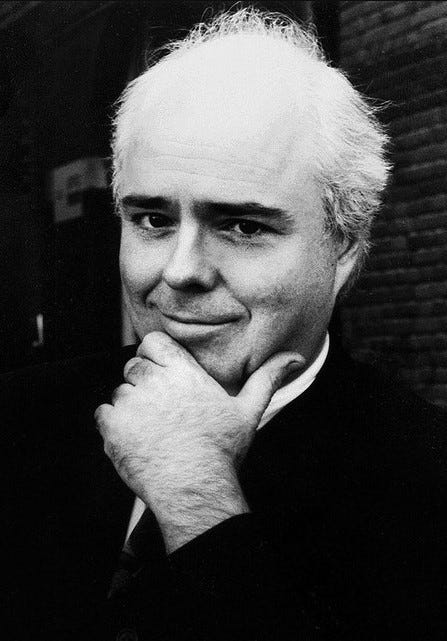
Wheen (pictured) remarks: “Political rulers have a Masonic solidarity that can transcend ideological differences, such as that between authoritarian Communism and capitalist democracy, bonded by their common desire for obedience and loyalty – and, of course, the retention of power”. [9]
But was it really just this sense of “solidarity” that led, for example, Richard Nixon, who was very close to Henry Kissinger, to become the first US president to visit both the Communist USSR and Communist China? [10]
Or was author Gary Allen on to something when he declared at an August 1972 press conference: “There is a conspiracy to set up a one-world socialist government through which ‘they’ will control the world…
“Since around 1960 or certainly 1962, Richard Nixon has knowingly been an agent of the Rockefeller family, which is the ruling force in the Council on Foreign Relations, which favours a one-world super-state, which they would control”? [11]
Wheen notes: “Conspiratorial theories of both right and left often converged on the same suspects – the Council on Foreign Relations, the Bilderberg Group, and other well-connected outfits where the permanent government met to direct the world from behind closed doors”. [12]
There is certainly good reason for that convergence of suspicion, as I can myself testify after researching the backgrounds of those involved in the UK counterpart of the Council on Foreign Relations, namely Chatham House – the Royal Institute of International Affairs. [13]
Needless to say, the system does not just use propaganda and smears to stop people from exposing or challenging its monopoly on power.
American dissidents had, since 1956, been targeted by Cointelpro, which went far beyond intelligence-gathering, with its aim being to “discredit, destabilise and demoralise” any group or individual considered a threat. [14]
Political repression was also in the air in the UK in the 1970s – to the point of there nearly having been a military-backed coup d’état.
The identity of some of those involved in the conspiracy is very interesting indeed.

The “crisis” was sparked by the return to power of the Labour Party, later transformed into a neoliberal tool by Tony Blair and now Keir Starmer, but at the time headed by Harold Wilson, who was regarded by Sir Walter Walker (pictured), a former commander-in-chief of Nato’s Allied Forces Command, as a “proven Communist”. [15]
Wheen explains that Walker was the chosen front man for “top people in boardrooms” [16] who had big plans to change the UK.
“What the country needed, and now quite urgently, was a ‘businessman’s government’ led by – well, by businessmen such as themselves, along with a retired army general to impose order and discipline”. [17]
After trying to enlist supporters for his “Civil Assistance”, an organisation regarded by many as a kind of militia, Walker “decided that private chats with grandees and money-men might be rather more productive than appeals for mass support in the correspondence columns of the Daily Telegraph, which had been his previous tactic”. [18]
“The general was introduced to representatives of Consolidated Goldfields, Anglo-Eastern Bank, Lazard Brothers, M&G Unit Trusts, Cazenove and Cater Ryder & Co”, [19] explains Wheen.
“The only politician present, the dry-as-dust right-winger Nicholas Ridley MP, was ‘talking in riddles’, according to Walker’s account. ‘It seemed to me that what he was trying to convey, but hadn’t the guts to say openly, was that the only hope for this country would be a military coup’”. [20]
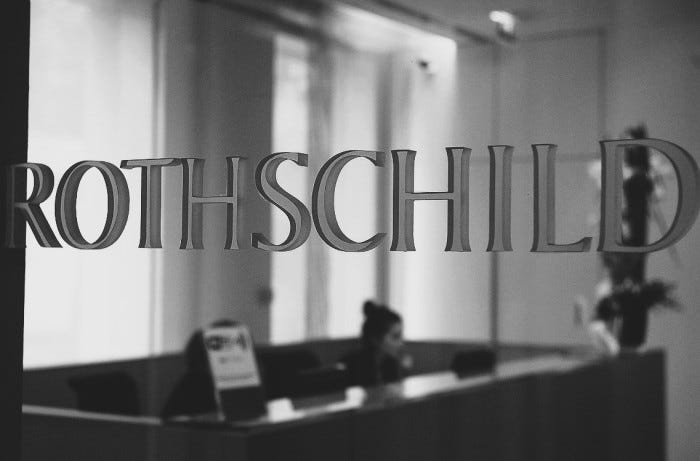
Another of these meetings was hosted by Sir Val Duncan, chairman of Rio Tinto Zinc [21] – Rio Tinto is, like the aforementioned Consolidated Goldfields, a longstanding Rothschild entity. [22]
Duncan told leading journalists invited to the dinner: “When anarchy comes, we are going to provide a lot of essential generators to keep electricity going, and we invited you, the editors, to tell us if you can maintain communications to the people. Then the army will play its proper role”. [23]
A few days later, a small item in the Daily Telegraph noted that “as well as supplying uranium, copper and other metals, Rio Tinto Zinc is also in a position to furnish a coalition government should one be required”. [24]
What the conspirators had in mind, says Wheen, was “a junta on the South American model” [25] and they had been greatly enthused by recent events in Chile.
“Conservatives in Europe and the US who had applauded the Chilean coup of 1973 watched with even greater admiration as General Pinochet gave his country a course of economic ‘shock treatment’ prescribed by the Chicago economist Milton Friedman as the cure for hyper-inflation – deregulation, privatisation, cuts in tax and in social spending.
“It was what Margaret Thatcher later applied to the UK, and even before her election to the Tory leadership in 1975 some proto-Thatcherites decided that this was the remedy for the British disease: an unfettered free market combined with an authoritarian government…” [26]

All sorts of outlandish detail about this coup conspiracy has subsequently come out – Cunard shipping line was asked by the army and secret services to lend them the QE2 liner “as a floating prison for the Cabinet” [27] and there was apparently an army-linked scheme to install the Queen’s husband Prince Philip as president of the UK. [28]
MI5 agent Peter Wright (pictured), later author of Spycatcher, spread the rumour that the PM, Wilson, was a Soviet agent.
Wheen explains that Wright initially had the idea of going public, revealing the existence of the MI5 file on Wilson, but had “second thoughts” following a conversation with “his friend Lord [Victor] Rothschild”. [29]
A Plan B emerged, as Wright detailed in Spycatcher: “The plan was simple. MI5 would arrange for selective details of the intelligence about leading Labour Party figures, but especially Wilson, to be leaked to sympathetic pressmen.
“Using our contacts in the press and among union officials, word of the material contained in MI5 files and the fact that Wilson was considered a security risk would be passed around”. [30]
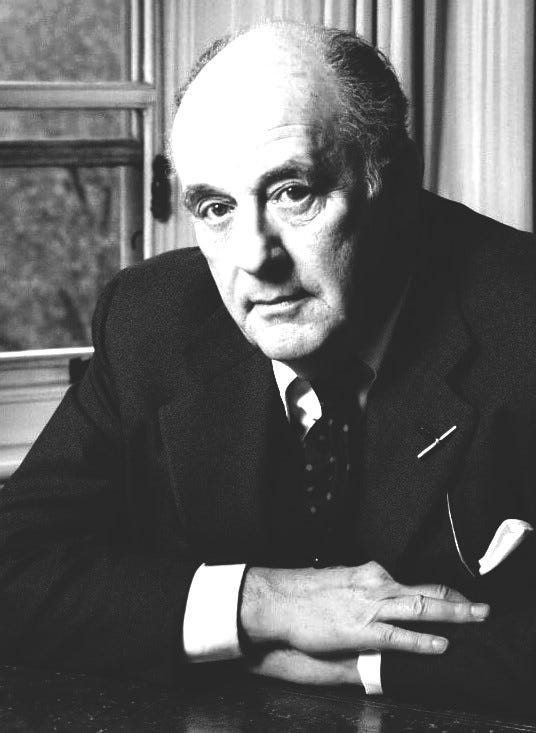
Wheen adds that although Wright was keen on this plan, “once again Lord Rothschild (pictured) persuaded him to reject it”. [30]
Was this mere advice from a “friend” or something closer to the giving of orders?
More generally, what exactly is behind this thing we call the system or the criminocracy?
What are the connections between totalitarian regimes of the past and neoliberal states today?
Is there an underlying continuity that we can identify?
Somewhat surprisingly, the most lucid analysis in this particular book comes from German resistance fighters more plausibly given the “terrorist” label so widely applied to all kinds of dissidents.
The Bewegung 2. Juni, who killed the president of West Berlin’s supreme court, Günter von Denkmann, in November 1974, “issued a communiqué pointing out that he had been a judge in the Nazi era”, [31] writes Wheen.
Hanns Martin Schleyer, president of the German employers’ federation, who was kidnapped and murdered by the Rote Armee Fraktion (RAF) in 1977, had been a Hauptsturmführer in the SS. [32]
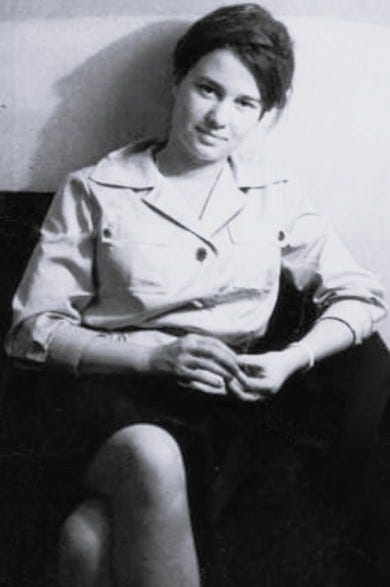
Ulrike Meinhof of the RAF (pictured) said in 1972 that Nazism “was only the political and military precursor to the imperialist system of multinational corporations”. [33]
Defending the killing of Israeli athletes at the Olympic Games in Munich by Palestinians from the Black September guerrilla group, she argued that the anti-imperialist nature of the attack was enhanced by the fact that it had happened in Germany.
“The comrades of the Black September movement have brought their own Black September of 1970 – when the [Israeli-backed] Jordanian army slaughtered more than twenty thousand Palestinians – home to the place whence that massacre sprang: West Germany, formerly Nazi Germany, now the centre of imperialism.
“The place from which Jews of Western and Eastern Europe were forced to emigrate to Israel, the place from which Israel derived its capital by way of restitution, and officially got its weapons until 1965”. [34]
I am sure I do not need to remind people that Israel – which has been doing its best for the last year to become as reviled across the world as was Nazi Germany – came into existence thanks largely to the efforts of the Rothschild family. [35]
NOTES
Sayanim
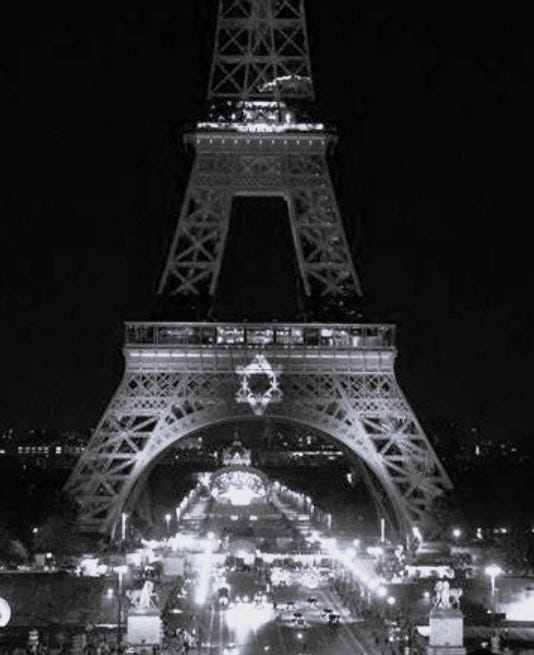
[1] Jacob Cohen, Le Printemps des sayanim: Récit (Paris: L’Harmattan, 2010), p. 65. The translations are my own.
[2] Cohen, p. 165, p. 167.
[3] Cohen, p. 2.
[4] Cohen, p. 5.
[5] Cohen, p. 16.
[6] Cohen, p. 31.
[7] Cohen, p. 47.
[8] Cohen, p. 17.
[9] Cohen, pp. 43-44.
[10] Cohen, p. 55.
[11] Cohen, pp. 72-73.
[12] Cohen, p. 17.
[13] Cohen, p. 66.
[14] Cohen, p. 51.
[15] Cohen, p. 78.
[16] Cohen, p. 25. Arschloch means ‘arsehole’.
[17] Cohen, p. 26.
[18] Cohen, p. 26.
[19] Cohen, p. 27.
[20] Ibid.
[21] Cohen, p. 38.
[22] Ibid.
[23] Cohen, p. 27.
[24] Cohen, p. 73.
[25] Cohen, p. 77.
[26] Cohen, pp. 63-64.
[27] Cohen, p. 64.
[28] Cohen, p. 66.
[29] Cohen, p. 74.
Propaganda

[1] Eric Hazan, LQR: La Propagande du quotidien (Paris: Raisons d’Agir Editions, 2006), p. 18. All translations are my own. Thanks to Karim for the recommendation!
[2] Hazan, p. 11.
[3] Paul Cudenec, Fascism Rebranded: Exposing the Great Reset (2021), pp. 280-84.
https://winteroak.org.uk/wp-content/uploads/2023/09/fascism-rebranded23web.pdf
[4] Johann Chapoutot, Libres d’Obéir: le management du nazisme à aujourd’hui (Paris: Gallimard, 2020), pp. 65-66.
[5] Paul Cudenec, Converging Against the Criminocrats: Essays and Talks for the New International Resistance (2023), p. 73.
https://winteroak.org.uk/wp-content/uploads/2023/09/convergingagainstthe-criminocratsweb-1.pdf
[6] https://juste-milieu.fr/alba-ventura-et-les-cafards-complotistes-que-fait-larcom/
[7] https://www.miviludes.interieur.gouv.fr/quest-ce-quune-d%C3%A9rive-sectaire
[8] Paul Cudenec, ‘Life philosophy: beyond left and right’.
https://winteroak.org.uk/2024/10/14/life-philosophy-beyond-left-and-right/
[9] Victor Klemperer, LTI, la langue du IIIe Reich, carnets d’un philologue, trad. Elisabth Guillot (Paris: Albin Michel, 1996), pp. 38-39, cit. Hazan, p. 12.
[10] Hazan, p. 121.
[11] Hazan, p. 14.
[12] Hazan, p. 29.
[13] Hazan, p. 33.
[14] Hazan, p. 31.
[15] Hazan, p. 29.
[16] Hazan, p. 18.
[17] Hazan, p. 76.
[18] Ibid.
[19] Pour la restructuration et l’humanisation des relations internationales (Moscow: Novosti, 1989), p. 80, cit. Hazan, p. 37.
[20] Hazan, p. 44.
[21] https://en.wikiquote.org/wiki/Joseph_Stalin
[22] Hazan, p. 84.
[23] Hazan, p. 87.
[24] Hazan, p. 88.
[25] Hazan, p. 90.
[26] Hazan, p. 93.
[27] Hazan, p. 94.
[28] Hazan, p. 79.
[29] Ibid.
[30] Ibid.
[31] Hazan, p. 96.
[32] Hazan, p. 39.
[33] Ibid.
[34] Jacques Delperrié de Bayac, Histoire de la Milice (Paris: Fayard, 1969), p. 503. cit. Hazan, pp. 39-40.
[35] Hazan, p. 20.
[36] Hazan, p. 29.
[37] Hazan, p. 107.
[38] Hazan, p. 80.
[39] Hazan, p. 75.
[40] Hazan, p. 75 FN.
[41] Hazan, p. 75.
[42] Ibid.
[43] Hazan, p. 111.
[44] Hazan, p. 111 FN.
[45] Jacob Cohen, Le Printempts des sayanim: Récit (Paris: L’Harmattan, 2010), p. 126.
[46] https://fr.wikipedia.org/wiki/Ensemble_pour_la_R%C3%A9publique_(France)
[47] https://en.wikipedia.org/wiki/Emmanuel_Macron
[48] p. 12.
[49] Paul Cudenec, *Enemies of the People: The Rothschilds and their corrupt global empire (2022), pp. 44-45.
https://winteroak.org.uk/wp-content/uploads/2024/09/enemiesofthepeopleol.pdf
[50] Francis Wheen, *Strange Days Indeed: The Golden Age of Paranoia* (London: Fourth Estate, 2010), p. 88.
Conspiracy
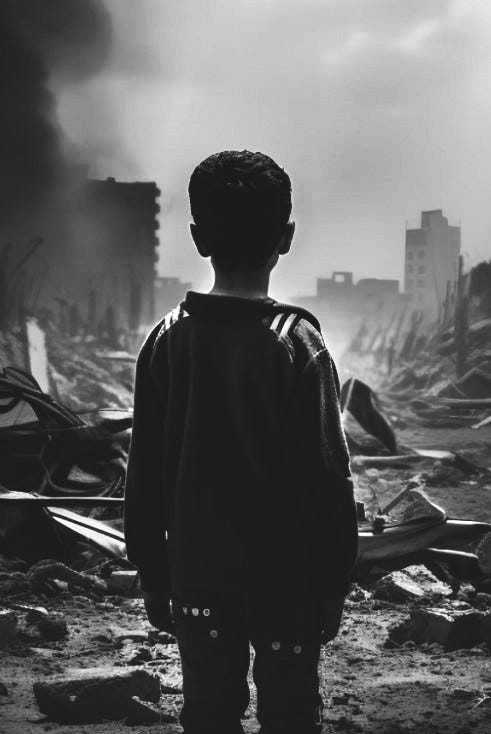
[1] Joseph Heller, ‘Catch-22 and Disorder in the Courts’, Crawdaddy, August 1973, cit. Francis Wheen, Strange Days Indeed: The Golden Age of Paranoia (London: Fourth Estate, 2010), p. 130. Thanks for the book, Martin!
[2] Mark Harris, ‘Conspiracy to the Left of Us!’, New York Times magazine, 24 August 1975, p. 12, cit. Wheen, p. 284.
[3] Ibid.
[4] Michael Kelly, ‘The Road to Paranoia’, New Yorker, 19 June 1995, p. 67, cit. Wheen, p. 299.
[5] Wheen, p. 280.
[6] See ‘The stench of the system 2: propaganda’.
[7] Max Lerner, ‘The Climate of Paranoia is the Culprit’, Los Angeles Times, 19 May 1972, p. C7, cit. Wheen, p. 299.
[8] See ‘The stench of the system 2: propaganda‘.
[9] Wheen, p. 162.
[10] Wheen, p. 289.
[11] Wheen, pp. 289-90.
[12] Wheen, p. 300.
[13] Paul Cudenec, ‘Power and corruption: the public-private imperial mafia’.
https://winteroak.org.uk/2024/05/15/power-and-corruption-the-public-private-imperial-mafia/
[14] Allan M. Jalon, ‘A Break-in to End All Break-ins’, Los Angeles Times, 8 March 2006, cit. Wheen, p. 173.
[15] Wheen, p. 252.
[16] Ibid.
[17] Ibid.
[18] Ibid.
[19] Ibid.
[20] Stephen Dorril and Robin Ramsay, Smear! Wilson and the Secret State (London: Fourth Estate, 1991), p. 283, cit. Wheen, p. 252.
[21] Wheen, p. 254.
[22] See Niall Ferguson, The House of Rothschild: The World’s Greatest Banker 1849-1999 (New York: Penguin, 2000).
[23] Wheen, p. 255.
[24] Ibid.
[24] Ibid.
[25] Wheen, p. 255.
[26] Wheen, p. 256.
[27] Wheen, p. 255.
[28] Wheen, p. 256.
[29] Wheen, p. 262.
[30] Peter Wright, Spycatcher (New York: Viking Penguin, 1987), p. 369, cit. Wheen p. 263.
[30] Wheen, p. 263.
[31] Wheen, p. 90.
[32] Ibid.
[33] Wheen, p. 91.
[34] Stefan Aust, The Baader-Meinhof Complex, translated by Anthea Bell (London: Bodley Head, 2008), p. 182, cit. Wheen, p. 89.
[35] https://www.thejc.com/news/features/a-family-that-helped-build-a-new-nation-kkakggbe
Leave a Reply